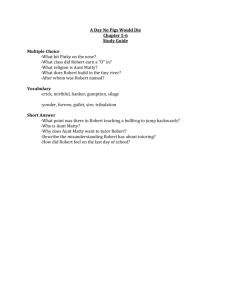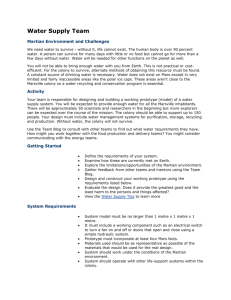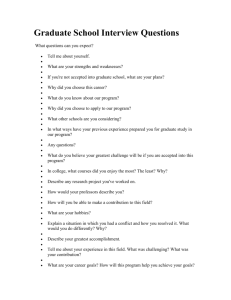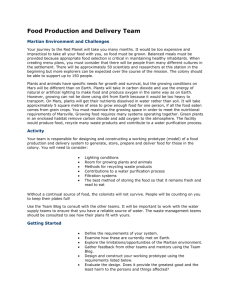Mars Colony Project: Write Up Guideline Situation: SpaceX is
advertisement
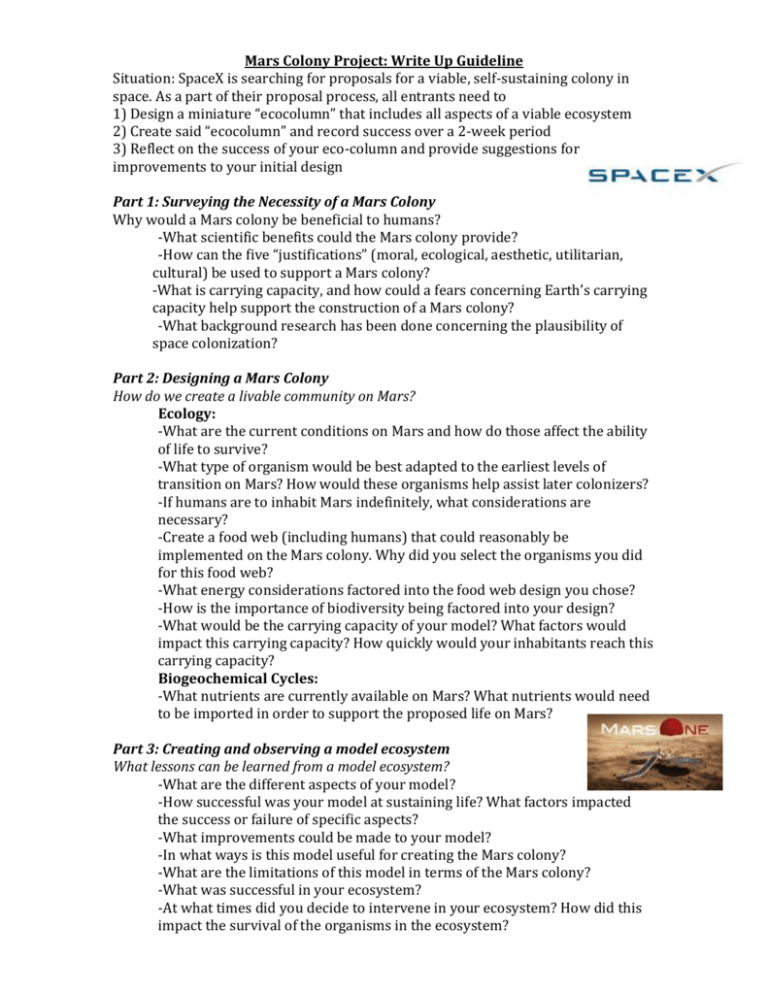
Mars Colony Project: Write Up Guideline Situation: SpaceX is searching for proposals for a viable, self-sustaining colony in space. As a part of their proposal process, all entrants need to 1) Design a miniature “ecocolumn” that includes all aspects of a viable ecosystem 2) Create said “ecocolumn” and record success over a 2-week period 3) Reflect on the success of your eco-column and provide suggestions for improvements to your initial design Part 1: Surveying the Necessity of a Mars Colony Why would a Mars colony be beneficial to humans? -What scientific benefits could the Mars colony provide? -How can the five “justifications” (moral, ecological, aesthetic, utilitarian, cultural) be used to support a Mars colony? -What is carrying capacity, and how could a fears concerning Earth’s carrying capacity help support the construction of a Mars colony? -What background research has been done concerning the plausibility of space colonization? Part 2: Designing a Mars Colony How do we create a livable community on Mars? Ecology: -What are the current conditions on Mars and how do those affect the ability of life to survive? -What type of organism would be best adapted to the earliest levels of transition on Mars? How would these organisms help assist later colonizers? -If humans are to inhabit Mars indefinitely, what considerations are necessary? -Create a food web (including humans) that could reasonably be implemented on the Mars colony. Why did you select the organisms you did for this food web? -What energy considerations factored into the food web design you chose? -How is the importance of biodiversity being factored into your design? -What would be the carrying capacity of your model? What factors would impact this carrying capacity? How quickly would your inhabitants reach this carrying capacity? Biogeochemical Cycles: -What nutrients are currently available on Mars? What nutrients would need to be imported in order to support the proposed life on Mars? Part 3: Creating and observing a model ecosystem What lessons can be learned from a model ecosystem? -What are the different aspects of your model? -How successful was your model at sustaining life? What factors impacted the success or failure of specific aspects? -What improvements could be made to your model? -In what ways is this model useful for creating the Mars colony? -What are the limitations of this model in terms of the Mars colony? -What was successful in your ecosystem? -At what times did you decide to intervene in your ecosystem? How did this impact the survival of the organisms in the ecosystem? Part 4: Manipulations within the model ecosystem How can an ecosystem model be used to test environmental interactions? -What was the impact of your manipulation within your ecosystem? -What inferences can you make about biotic and abiotic interactions in the world from this experimentation? Part 5: Conclusions What are the implications of a manmade ecosystem? -What are some concerns about the ability of the transplanted organisms to adapt to their new environment? Do you anticipate some organisms being able to adapt too well? What controls are proposed to ensure no organism becomes too invasive? -How can the Mars colony be used as a harbor for endangered species? -What lessons can be taken from previous failed human interventions in ecosystems? How will you prevent similar errors on the Mars colony? -What concerns exist for invasive pests? What precautions are being put into place to prevent this? -What regulations can be put into place to ensure your colony is able to survive indefinitely? What examples from current laws on Earth can you derive regulations from?
